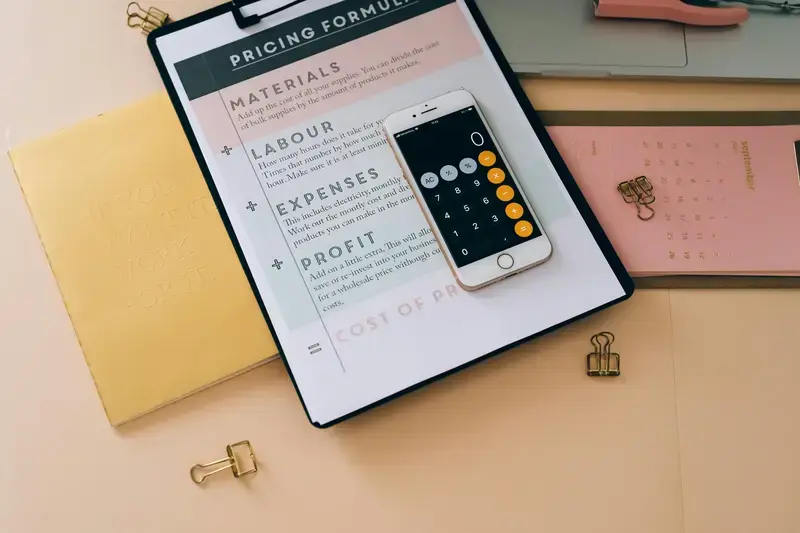Why Do App Development Cost Estimates Vary So Dramatically?
When you start researching mobile app development costs, the variation in pricing can feel overwhelming. You might find estimates ranging from £5,000 to £500,000 for what seems like similar projects. As app developers who've guided hundreds of clients through this journey, we understand your confusion and frustration.
The true cost of app development isn't just about writing code - it's about creating value through thoughtful design, robust architecture, and meaningful user experiences.
Think of app development cost factors like building a house. Just as homes can range from modest cottages to luxury mansions, apps can vary dramatically in scope and complexity. The final cost depends on numerous variables: are you building a simple two-bedroom home or a smart house with all the bells and whistles?
Throughout this guide, we'll explore the crucial elements that influence app development cost breakdown and help you understand why seemingly similar projects can have such different price tags. Having witnessed the mobile app budget variables firsthand over our years in the industry, we'll share honest insights about what drives app pricing variation.
Whether you're a startup founder working with limited resources or an enterprise decision-maker planning a significant investment, understanding these app estimate factors will help you make more informed decisions. We'll explore everything from feature complexity and design considerations to hidden technical requirements that often catch people by surprise.
Let's demystify these cost variations together, starting with the fundamental building blocks that make up your app's budget. By the end of this guide, you'll have a clearer picture of where your money goes and why.
The Basics of App Development Pricing
When you're first exploring app development costs, the numbers you encounter might seem like they're plucked from thin air. We frequently meet clients who've received quotes ranging from £5,000 to £500,000 for seemingly similar projects. It's perfectly normal to feel confused or even frustrated by these variations.
Understanding the Building Blocks of App Pricing
Think of app development like building a house - you start with a foundation (core functionality), add rooms (features), and then choose your fixtures and fittings (design elements). Just as a basic starter home costs less than a luxury villa, apps come with different price points based on their complexity.
Most app development projects typically fall into these price brackets:
- Basic apps with essential features: £20,000 - £40,000
- Mid-range apps with custom functionality: £40,000 - £75,000
- Complex, enterprise-level solutions: £75,000 - £150,000+
What These Prices Actually Cover
Every quote you receive should account for several fundamental elements. Much like how a cup of coffee at your local café isn't just about the beans (you're also paying for the barista's expertise, the machinery, and the service), app development pricing includes various components beyond just coding.
Remember that these figures aren't pulled from nowhere - they reflect real costs like developer time (typically charged at £40-100 per hour in the UK), project management, testing, and ongoing support. When you understand these basics, those varying quotes start to make much more sense.
Key Factors That Drive Development Costs
When clients come to us asking about app development costs, we often see their eyes widen at the range of possible prices. It's completely natural to feel overwhelmed - after all, app development cost factors can vary as dramatically as house prices across different London boroughs!
Core Cost Drivers
Let's break down the primary factors that influence your mobile app budget variables. Think of these as the building blocks that make up your app's final cost:
First, there's functionality complexity - just as a basic calculator app would cost far less than a sophisticated social media platform. Then we have design requirements, which can range from using standard components to creating bespoke animations and branded elements. Technical architecture, including backend infrastructure and third-party integrations, also plays a crucial role in app pricing variation.
Scale and Scope Considerations
The development cost breakdown becomes clearer when you consider your app's scale. Will it need to handle thousands of simultaneous users? Does it require real-time data processing? These app estimate factors can significantly impact the final price tag. Think of it like planning a wedding - the guest list size dramatically affects your overall budget!
User authentication, data storage, and security measures are often overlooked but vital components that influence costs. For instance, implementing secure payment gateways or compliance with data protection regulations requires additional development time and expertise.
Before finalising your app's feature list, create a 'must-have' versus 'nice-to-have' breakdown. This approach can help you prioritise features and manage your budget more effectively while leaving room for future updates.
How Feature Complexity Impacts Your Budget
When planning your app, it's natural to want all the bells and whistles you've seen in other successful applications. We often hear clients say, "I want something simple, just like Instagram." What many don't realise is that even seemingly straightforward features can hide layers of complexity that significantly impact development costs.
Understanding Feature Complexity Levels
Think of app features like building a house. A basic feature might be like installing a letterbox (simple), while a complex feature could be like adding a complete smart home system (complex). The more moving parts involved, the more time and expertise required to implement them properly.
- Basic Features (£1,000-£3,000 each) - User registration - Push notifications - Basic profile management
- Moderate Features (£3,000-£8,000 each) - Payment integration - Social media integration - Basic chat functions
- Complex Features (£8,000+) - Real-time synchronisation - Advanced analytics - AI-powered recommendations
Here's where it gets interesting: remember that popular video-sharing app TikTok? Its seemingly simple "scroll for next video" feature actually involves complex algorithms, content delivery networks, and video processing systems working together seamlessly.
We always encourage our clients to start with a Minimum Viable Product (MVP) focusing on core features that deliver the most value. You can always add more sophisticated features in future updates, and this approach helps manage both costs and risks more effectively.
The Role of Design and User Experience
When discussing app development cost factors, many people focus solely on functionality, overlooking how design and user experience (UX) can significantly impact the overall budget. At Glance, we've seen countless projects where the difference between a good and exceptional app often comes down to these crucial elements.
Why Design Quality Affects Your Budget
Think about your favourite apps - chances are they're not just functional, but also beautiful and intuitive to use. Creating this level of polish requires significant investment in both time and expertise. A basic interface might cost a fraction of what a custom-designed, animated experience would require, which explains some of the app pricing variation you might encounter.
The most expensive design is the one that fails to engage your users, no matter how little you paid for it
The UX Investment Balance
User experience design isn't just about making things look pretty - it's about creating an intuitive journey that keeps users engaged. This process involves user research, wireframing, prototyping, and testing - each adding to your mobile app budget variables. For instance, a simple food delivery app might need 3-4 iterations of user testing, while a complex financial application could require 8-10 rounds to get right.
When we break down development cost estimates, design and UX typically account for 20-30% of the total budget. This might seem substantial, but consider this: poor design can lead to higher support costs, lower user retention, and ultimately, the need for expensive redesigns. In our experience, investing in quality design early often proves more cost-effective in the long run.
Hidden Costs and Technical Requirements
When budgeting for app development, it's easy to focus solely on the obvious costs like coding and design. However, we've seen many clients caught off guard by hidden technical requirements that can significantly impact the final budget. Let's shine a light on these often-overlooked elements.
Common Hidden Technical Costs
- Server and hosting fees - Just like maintaining a home, your app needs a place to live
- SSL certificates and security measures - Think of these as your app's burglar alarm
- Third-party API integration costs - These are like utility bills that keep core features running
- Push notification services - Essential for keeping users engaged, but often carry ongoing costs
- Analytics and monitoring tools - Your app's health check-up system
- Database management - The storage room for all your app's valuable data
Long-term Technical Considerations
Remember when everyone had to suddenly update their apps for GDPR compliance? That's a perfect example of why you need to budget for ongoing maintenance and updates. We always advise our clients to set aside roughly 15-20% of their initial development budget for annual maintenance costs.
Think of your app like a car - it's not just about the purchase price, but also the ongoing servicing, insurance, and unexpected repairs. Technical debt (shortcuts taken during development) can accumulate like interest on a credit card if not properly managed, leading to higher costs down the road.
By planning for these hidden costs early in the development process, you can avoid unpleasant surprises and ensure your app remains healthy and competitive in the long run.
Why Location and Team Experience Matter
When exploring app development cost estimates, you might wonder why quotes from different regions vary so dramatically. It's a common source of confusion for many of our clients, and we completely understand why.
The Geography Factor
Development costs can vary significantly based on location due to different living costs and market rates. For example, an experienced developer in London might charge £600-£800 per day, while equally skilled developers in Manchester or Leeds might charge £400-£600. Looking further afield, rates in Eastern Europe or Asia can be even lower, though this often comes with its own set of challenges like time zones and communication barriers.
Experience Level Impact
Team experience is another crucial app development cost factor that significantly influences pricing. Think of it like choosing between a newly qualified mechanic and a master technician with 20 years of experience - both can fix your car, but their approaches and rates will differ considerably.
- Junior developers (1-3 years): Lower rates but require more oversight
- Mid-level developers (3-5 years): Balance of cost and capability
- Senior developers (5+ years): Higher rates but faster, more efficient work
- Technical architects (8+ years): Premium rates but crucial for complex projects
When comparing development cost estimates, always ask about the team's composition and experience level. A slightly higher upfront cost for experienced developers often leads to lower total project costs due to faster delivery and fewer bugs.
While it might be tempting to choose the lowest-priced option, remember that app development pricing variations often reflect the level of expertise and quality you can expect. The key is finding the sweet spot between cost, quality, and reliable delivery.
Platform Choices and Their Cost Implications
When clients come to us discussing their app projects, one of the first questions we explore together is which platform they should choose. It's completely natural to feel overwhelmed by the options - after all, the platform decision can significantly impact your budget.
Let's break down the main platform choices and their cost implications in a way that makes practical sense for your project planning.
Understanding Your Platform Options
Think of platforms like languages - you can either speak to one specific audience (native apps) or try to communicate with everyone using a universal language (cross-platform apps). Both approaches have their merits and cost considerations.
- Native iOS Development: Higher initial cost but excellent performance and user experience
- Native Android Development: Similar cost to iOS, with access to a larger user base
- Cross-platform Development: Potentially lower cost as one codebase serves multiple platforms
- Progressive Web Apps (PWAs): Most cost-effective but with some platform limitations
- Hybrid Solutions: Balance between cost and functionality
Just as you wouldn't use a sledgehammer to hang a picture frame, not every platform solution fits every project. We've seen clients save significant amounts by choosing PWAs for content-focused apps, while others benefited from investing in native development for performance-critical applications.
Remember, while cross-platform development might seem like the obvious choice to save money (and it often can), some features might require platform-specific development anyway. It's rather like buying a universal remote - it works for most things, but sometimes you still need the original remotes for specific functions.
The Impact of Timeline and Project Management
When discussing app development cost factors, one aspect that often surprises clients is how project timelines and management approaches can significantly impact the final budget. At Glance, we've seen countless projects where timeline decisions have made substantial differences to the overall investment required.
How Timeline Choices Affect Your Budget
Think of app development like building a house - rushing the process typically leads to higher costs. Fast-tracking development often requires more developers working simultaneously, which doesn't necessarily mean faster delivery but almost always means higher expenses. We've observed that projects with flexible timelines can cost 20-30% less than those with aggressive deadlines.
Time is the silent multiplier in app development - rush the process, and you'll pay not just in money, but in quality and technical debt
The Project Management Factor
The way your project is managed plays a crucial role in development cost breakdown. Different management methodologies - whether Agile, Waterfall, or hybrid approaches - bring their own cost implications. For instance, Agile development might seem more expensive initially due to its iterative nature, but it often reduces costly revisions later in the project.
Your choice of project management tools and communication frequency also affects the mobile app budget variables. Daily stand-ups and regular client meetings might seem like overhead, but they typically prevent expensive misunderstandings and keep app pricing variation in check. We've found that projects with clear communication channels and established management processes tend to stay closer to their initial estimates.
Remember, while longer timelines might mean more calendar days, they don't necessarily equate to higher costs. In fact, allowing for proper planning and realistic deadlines often results in more efficient resource allocation and better budget management.
Development Cost Breakdown: A Detailed Look
When clients ask us about app development costs, we often see their eyes widen at the final figures. Let's demystify these numbers by breaking down exactly where your investment goes during the development process.
Think of app development like building a house - you've got your foundation, framework, and finishing touches. Each component requires different specialists and varying amounts of time.
Core Development Cost Components
| Development Phase | Typical % of Budget | Key Activities |
|---|---|---|
| Planning & Analysis | 10-15% | Market research, requirement gathering, technical specifications |
| Design & UX | 15-20% | Wireframes, UI design, prototyping |
| Core Development | 40-50% | Frontend and backend coding, database setup |
| Testing & QA | 15-20% | Bug fixing, performance testing, user testing |
| Deployment & Support | 10-15% | App store submission, initial maintenance |
Remember those '£99 app builder' adverts you've seen? While tempting, they're rather like comparing a pre-fab shed to a custom-built home. Professional app development requires skilled specialists working in concert - from designers to developers to testers.
When reviewing quotes, look for this detailed breakdown. If a company can't or won't provide it, that's a red flag. Like checking the itemised bill at a restaurant, understanding where each pound goes helps you make informed decisions about your app investment.
Conclusion: Making Informed Budget Decisions
Understanding why app development cost estimates vary so dramatically can feel overwhelming at first. We've all been there - staring at wildly different quotes and wondering how to make sense of it all. After exploring the various factors that influence app development costs, you're now better equipped to make informed decisions about your project budget.
Remember that app development cost factors aren't just random numbers - they're directly tied to the value and quality of your final product. Whether you're weighing up development cost breakdown considerations or examining app estimate factors, the key is to align your budget with your business objectives rather than simply choosing the cheapest option.
Think of mobile app budget variables like building a house - you wouldn't want to cut corners on the foundation just to save a few quid. Similarly, investing in proper design, development, and testing can save you significant costs in the long run. We've seen countless projects where initial cost-cutting led to expensive revisions later.
When evaluating app pricing variation, focus on value rather than just numbers. Consider the team's experience, their location, your specific requirements, and the long-term maintenance costs. It's like choosing between a bespoke suit and one off the rack - sometimes paying more initially ensures a perfect fit for your needs.
Above all, remain flexible and realistic about your budget. The most successful apps we've worked on have been those where clients understood that quality development is an investment, not an expense. By considering all the factors we've discussed, you'll be well-positioned to make budget decisions that serve your app's long-term success.
Share this
Subscribe To Our Learning Centre
You May Also Like
These Related Guides

How Much Does It Cost To Build A Delivery App Like DPD Or Evri?

How Much Does It Cost For App Development?



